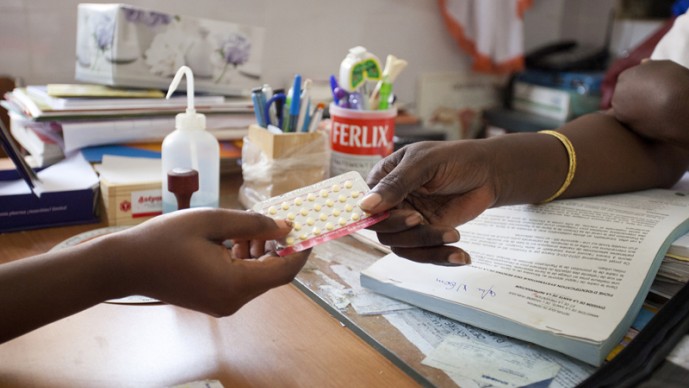Harnessing Today's Science to Expand Women's Choices: A Grand Challenge for Contraceptive Discovery
- Stephen Ward, Mar 24, 2020

It's difficult to overstate the impact of the birth-control pill in terms of improving maternal and newborn health and providing new educational, professional, and social opportunities for women since its approval in 1960. In fact, modern contraceptive methods, starting with the pill and expanding into a wide range of effective hormone-based products, have become such a key element of reproductive health that it's easy to take them for granted, or view family planning as a "solved problem." And yet there are still hundreds of millions of women around the world who are not using any effective form of contraception, despite wanting to avoid pregnancy. Why is this?
The answer is complicated. Equitable access remains challenging. Social factors can influence and complicate women's decisions and choices. It's critical that we don't diminish or neglect the importance of these issues. But what is also clear is that the most widely available contraceptive products themselves can create challenges for women who want to avoid the side effects of hormonal methods, particularly changes in menstrual bleeding patterns. Even in rich countries where access to medical care and menstrual hygiene products is generally good, many women express dissatisfaction about these types of side effects, leading to method switching or discontinuation. These challenges are compounded in many parts of the world where access to counseling and services is more challenging, and where social, cultural, and religious norms around menstrual bleeding exacerbate concerns about bleeding side effects.
So what if we envisioned new types of contraceptive products? Ones that acted much differently than the hormonal methods of today and provided a new, rich set of diverse options for women to choose from? As we consider this possibility, some 60 years after the approval of the first birth control pill, it's clear that the road to this goal will be difficult and require investment over the long-term and with both focus and an appetite for taking scientific risk. In other words, it's worthy of the term "Grand Challenge".
It's this vision that has led the Bill & Melinda Gates Foundation to release our recent Grand Challenge, "Accelerating Discovery for Non-Hormonal Contraceptives." We believe that women around the world deserve contraceptive products designed with their needs and preferences in mind and that the opportunity to develop those products exists today, if the newest and best technology can be applied to this problem. While direct investment in contraceptive development has been limited in the past 20 years, tremendous gains have been realized in other areas of research. These include new ways to harness genetics and genomics to understand biology and guide drug discovery; powerful new physiological models combining organoid cultures, microfluidics, and bioengineering; and new sophisticated ways to perturb and analyze cells using genetic or chemical means to identify drug targets. Moreover, the broader field of reproductive biology continues to illuminate fascinating biology related to development of germ cells, regulation of ovarian follicles, and signaling events associated with sperm-egg binding, for example. These discoveries are driven by researchers not only in basic science but also in other, applied areas of reproductive health - infertility, endometriosis, reproductive cancers. Getting these creative minds focused on solving the problems of contraception while also taking advantage of technological innovation would set the stage for dramatic progress in developing new and better contraceptive products.
The foundation started down this path in 2016, when we released a Grand Challenges Explorations call to "Develop Novel Platforms to Accelerate Contraceptive Drug Discovery," aimed at getting bright researchers across other areas of science to think about how their work could be applied to contraceptive discovery. This call was a tremendous success, resulting in 13 grants, largely to investigators who had never previously published on contraception, and many of these have now gone on to receive follow-on funding based on early successes. These include: Teresa Woodruff (Northwestern University), who is applying bioengineering to develop ex vivo systems for oocyte development and ovulation; Darryl Russell (University of Adelaide), who is looking at cellular adhesion and signaling in the follicle as a possible contraceptive mechanism; and David Pepin and Patricia Donahoe (Massachusetts General Hospital), who are investigating ways to globally suppress growth and development of ovarian follicles. While these projects are promising, they are still high risk, and it will take many different ideas and investigators to come up with and actually develop new products.
We hope our current call will build on this momentum and create exciting new opportunities for researchers, including those that may never have considered working on contraceptive discovery. The foundation is committed to developing new products that work for women, not only in terms of preventing pregnancy but also in fitting their lives. This is a long-term vision, and the time to build up the research environment and the capabilities we need to be successful is now. While the bar set by hormonal contraceptives is high, ultimately a product that's not used by a woman who needs it can never be "good enough." We think we can do better, but we need your help to get there.